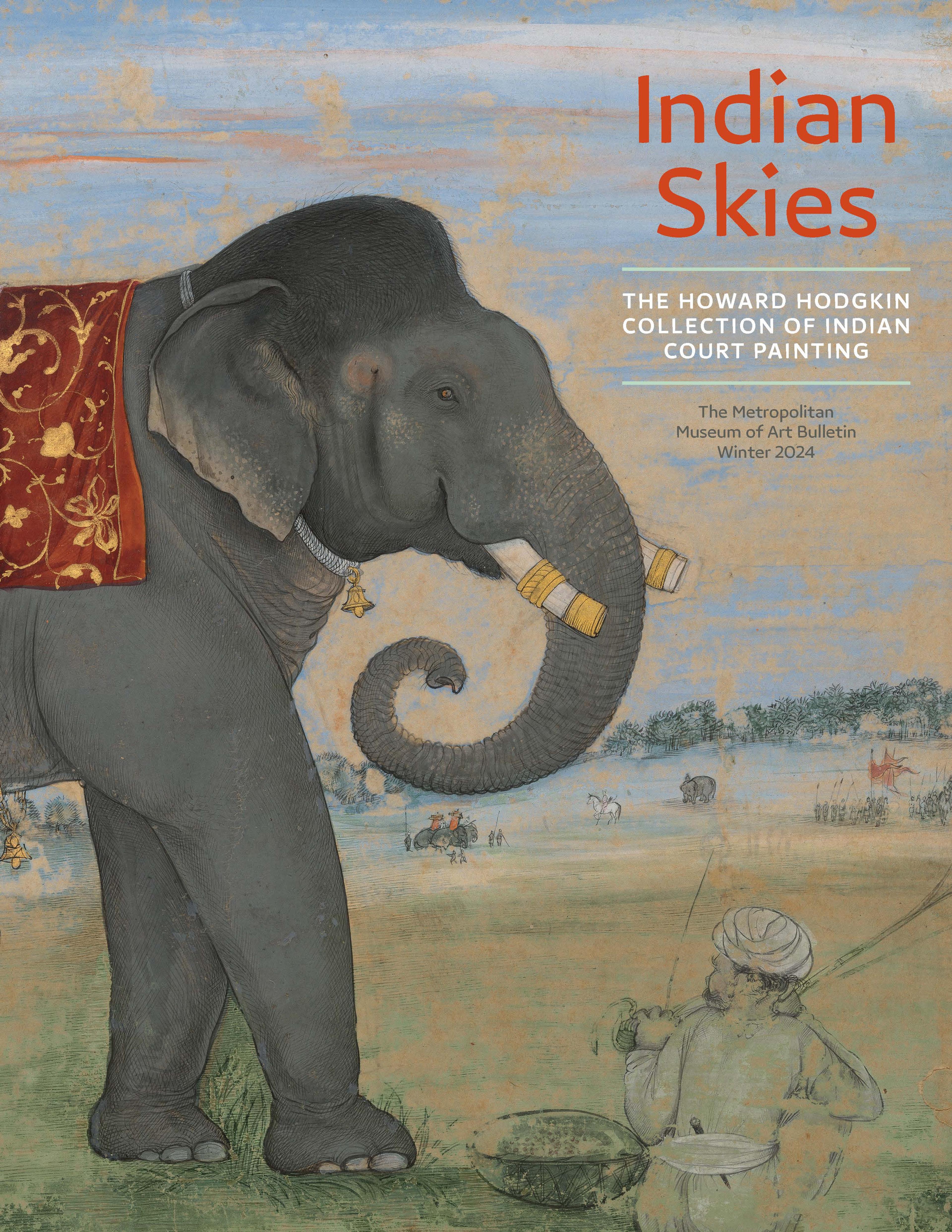Elephant Trampling a Horse
This dynamic work depicts an enraged elephant trampling upon a horse. The scene been produced with the shading techniques of nim-qalam (half pen) and the marbling technique known as kaghaz-i abri , or just abri. Here the artist has skillfully blocked off the areas of the elephant, rider, and horse, and created a vibrant marbled background, before finishing the work with fine black ink shading to create the details of the animals and mahout. Marbled paintings were produced in the Deccan in the late sixteenth and seventeenth centuries. This technique involved manipulating floating pigments on the surface of a liquid bath to form designs, which were then transferred to a sheet of paper by carefully laying it on top.
Artwork Details
- Title: Elephant Trampling a Horse
- Date: mid-17th century
- Geography: Made in India, Deccan, Bijapur. Country of Origin India
- Medium: Gold and opaque watercolor on marbled paper
- Dimensions: Frame: 12 3/8 in. × 15 11/16 in. × 1 in. (31.5 × 39.8 × 2.5 cm)
Image: 6 11/16 × 10 1/16 in. (17 × 25.5 cm) - Classification: Codices
- Credit Line: Howard Hodgkin Collection, Purchase, Florence and Herbert Irving Acquisitions, Harris Brisbane Dick, and 2020 Benefit Funds; Howard S. and Nancy Marks, Lila Acheson Wallace, and Friends of Islamic Art Gifts; Louis V. Bell, Harris Brisbane Dick, Fletcher, and Rogers Funds and Joseph Pulitzer Bequest; and funds from various donors, 2022
- Object Number: 2022.202
- Curatorial Department: Islamic Art
More Artwork
Research Resources
The Met provides unparalleled resources for research and welcomes an international community of students and scholars. The Met's Open Access API is where creators and researchers can connect to the The Met collection. Open Access data and public domain images are available for unrestricted commercial and noncommercial use without permission or fee.
To request images under copyright and other restrictions, please use this Image Request form.
Feedback
We continue to research and examine historical and cultural context for objects in The Met collection. If you have comments or questions about this object record, please complete and submit this form. The Museum looks forward to receiving your comments.
